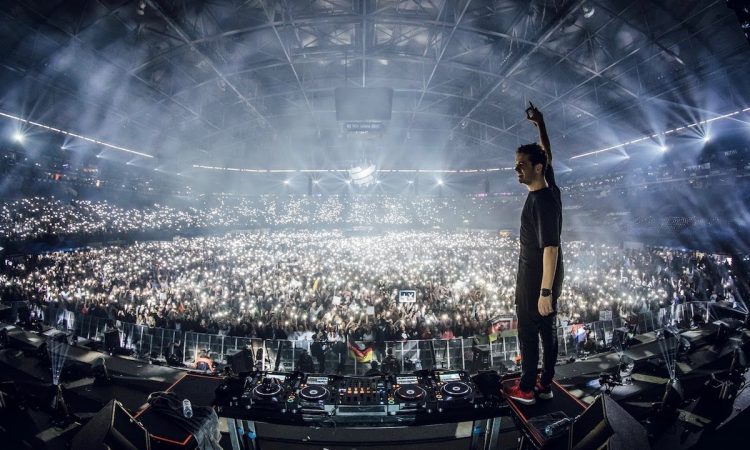Korean pop star and YouTube sensation Psy gave Britney Spears a surprise visit on the show, and taught her his famous horse dance! Read more about Psy and “Gangnam Style” after the jump.
“Park Jaesang is an unlikely poster boy for South Korea’s youth-obsessed, highly lucrative, and famously vacuous pop music. Park, who performs as Psy (short for psycho), is a relatively ancient 34, has been busted for marijuana and for avoiding the country’s mandatory military service, and is not particularly good-looking. His first album got him fined for “inappropriate content” and the second was banned. He’s mainstream in the way that South Korea’s monolithically corporate media demands of its stars, who typically appear regularly on TV variety and even game shows, but as a harlequin, a performer known for his parodies, outrageous costumes, and jokey concerts. Still, there’s a long history of fools and court jesters as society’s most cutting social critics, and he might be one of them.
Now, Park has succeeded where the K-Pop entertainment-industrial-complex and its superstars have failed so many times before: he’s made it in America. The opening track on his sixth album, “Gangnam Style” (watch it at right), has earned 49 million hits on YouTube since its mid-July release, but the viral spread was just the start.
The American rapper T-Pain was retweeted 2,400 times when he wrote “Words cannot even describe how amazing this video is.” Pop stars expressed admiration. Billboard is extolling his commercial viability; Justin Bieber’s manager is allegedly interested. The Wall Street Journal posted “5 Must-See” response videos. On Monday, a worker at L.A.’s Dodger stadium noticed Park in the stands and played “Gangnam Style” over the stadium P.A. system as excited baseball fans spontaneously reproduced Park’s distinct dance in the video. “I have to admit I’ve watched it about 15 times,” said a CNN anchor. “Of course, no one here in the U.S. has any idea what Psy is rapping about.”
I certainly didn’t, beyond the basics: Gangnam is a tony Seoul neighborhood, and Park’s “Gangnam Style” video lampoons its self-importance and ostentatious wealth, with Psy playing a clownish caricature of a Gangnam man. That alone makes it practically operatic compared to most K-Pop. But I spoke with two regular observers of Korean culture to find out what I was missing, and it turns out that the video is rich with subtle references that, along with the song itself, suggest a subtext with a surprisingly subversive message about class and wealth in contemporary South Korean society. That message would be awfully mild by American standards — this is no “Born in the U.S.A.” — but South Korea is a very different place, and it’s a big deal that even this gentle social satire is breaking records on Korean pop charts long dominated by cotton candy.
“Korea has not had a long history of nuanced satire,” Adrian Hong, a Korean-American consultant whose wide travels make him an oft-quoted observer of Korean issues, said of South Korea’s pop culture. “In fact, when you asked me about the satire element, I was super skeptical. I don’t expect much from K-Pop to begin with, so the first 50 times I heard this, I was just like, ‘Allright, whatever.’ I sat down to look at it and thought, ‘Actually, there’s some nuance here.'”
One of the first things Hong pointed to in explaining the video’s subtext was, believe it or not, South Korea’s sky-high credit card debt rate. In 2010, the average household carried credit card debt worth a staggering 155 percent of their disposable income (for comparison, the U.S. average just before the sub-prime crisis was 138 percent). There are nearly five credit cards for every adult. South Koreans have been living on credit since the mid-1990s, first because their country’s amazing growth made borrowing seem safe, and then in the late 1990s when the government encouraged private spending to climb out of the Asian financial crisis. The emphasis on heavy spending, coupled with the country’s truly astounding, two-generation growth from agrarian poverty to economic powerhouse, have engendered the country with an emphasis on hard work and on aspirationalism, as well as the materialism that can sometimes follow.
Gangnam, Hong said, is a symbol of that aspect of South Korean culture. The neighborhood is the home of some of South Korea’s biggest brands, as well as $84 billion of its wealth, as of 2010. That’s seven percent of the entire country’s GDP in an area of just 15 square miles. A place of the most conspicuous consumption, you might call it the embodiment of South Korea’s one percent. “The neighborhood in Gangnam is not just a nice town or nice neighborhood. The kids that he’s talking about are not Silicon Valley self-made millionaires. They’re overwhelmingly trust-fund babies and princelings,” he explained.
This skewering of the Gangnam life can be easy to miss for non-Korean. Psy boasts that he’s a real man who drinks a whole cup of coffee in one gulp, for example, insisting he wants a women who drinks coffee. “I think some of you may be wondering why he’s making such a big deal out of coffee, but it’s not your ordinary coffee,” U.S.-based Korean blogger Jea Kim wrote at her site, My Dear Korea. (Her English-subtitled translation of the video is at right.) “In Korea, there’s a joke poking fun at women who eat 2,000-won (about $2) ramen for lunch and then spend 6,000 won on Starbucks coffee.” They’re called Doenjangnyeo, or “soybean paste women” for their propensity to crimp on essentials so they can over-spend on conspicuous luxuries, of which coffee is, believe it or not, one of the most common. “The number of coffee shops has gone up tremendously, particularly in Gangnam,” Hong said. “Coffee shops have become the place where people go to be seen and spend ridiculous amounts of money.”
The video is “a satire about Gangnam itself but also it’s about how people outside Gangnam pursue their dream to be one of those Gangnam residents without even realizing what it really means,” Kim explained to me when I got in touch with her. Koreans “really wanted to be one of them,” but she says that feeling is changing, and “Gangnam Style” captures people’s ambivalence.
“Koreans have been kind of caught up in this spending to look wealthy, and Gangnam has really been the leading edge of that,” Hong said. “I think a lot of what [Psy] is pointing out is how silly that is. The whole video is about him thinking he’s a hotshot but then realizing he’s just, you know, at a children’s playground, or thinking he’s playing polo or something and realizes he’s on a merry-go-round.”
“Human society is so hollow, and even while filming I felt pathetic.” Psy hits all the symbols of Gangnam opulence, but each turns out to be something much more modest, as if suggesting that Gangnam-style wealth is not as fabulous as it might seem. We think he’s at a beach in the opening shot, but it turns out to be a sandy playground. He visits a sauna not with big-shot businessmen but with mobsters, Kim points out, and dances not in a nightclub but on a bus of middle-aged tourists. He meets his love interest in the subway. Kim thinks that Psy’s strut though a parking garage, two models at his side as trash and snow fly at them, is meant as a nod to the common rap-video trope of the star walking down a red carpet covered in confetti. “I think he’s pointing out the ridiculousness of the materialism,” Hong said.
(If you’re wondering about the bizarre episodes in the elevator and with the red sports car, as I was, it turns out that those are probably just excuses for a couple of cameos by TV personalities, which is apparently common in South Korean music videos.)
None of this commentary is particularly overt, which is actually what could make “Gangnam Style” so subversive. Social commentary is just not really done in mainstream Korean pop music, Hong explained. “The most they’ll do is poke fun at themselves a little bit. It’s really been limited.” But Psy “is really mainstreaming it, and he’s doing it in a way that maybe not everybody quite realizes.” Park Jaesang isn’t just unusual because of his age, appearance, and style; he writes his own songs and choreographs his own videos, which is unheard of in K-Pop. But it’s more than that. Maybe not coincidentally, he attended both Boston University and the Berklee College of Music, graduating from the latter. His exposure to American music’s penchant for social commentary, and the time spent abroad that may have given him a new perspective on his home country, could inform his apparently somewhat critical take on South Korean society.
Of course, it’s just a music video, and a silly one at that. Does it really have to be about anything more complicated? “If I hadn’t seen that behind-the-scenes, I would have said he’s just poking fun at himself,” Hong said of the official making-of video, which is embedded at right. It’s mostly of Park or Psy having fun on set, but at one point he pauses in filming. “Human society is so hollow, and even while filming I felt pathetic. Each frame by frame was hollow,” he sighs, apparently deadly serious. It’s a jarring moment to see the musician drop his clownish demeanor and reveal the darker feelings behind this lighthearted-seeming song. Although, Hong noted, “hollow” doesn’t capture it: “It’s a word that’s a mixture or shallow or hollow or vain,” he explained.
Kim seemed to feel the same way about the video, though it’s so cheery on the surface. “He was satirizing more than just this one neighborhood,” she told me. On her blog, she suggested the video portrayed the Gangnam area, a symbol of South Korea’s national aspirations for prosperity and status, as “nothing but materialistic and about people who are chasing rainbows.” Pretty heavy for a viral pop hit.
“I think it all ties back to the same thing: the pursuit of materialism, the pursuit of form over function,” Hong said. “Koreans made extraordinary gains as a country, in terms of GDP and everything else, but that growth has not been equitable. I think the young people are finally realizing that. There’s a genuine backlash. … You’re seeing a huge amount of resentment from youth about their economic circumstances.” Even if Psy wasn’t specifically nodding to this when he wrote the song and shot the video, it’s part of the contemporary South Korean society that he inhabits. “The context is all of these tensions going on where Koreans are realizing where they’re at, how they got there, what they need to do to move forward.”
It’s difficult to imagine that much of this could be apparent to non-Koreans, which Kim told me is why she decided to write it up on her blog. “I thought people outside Korea might take it just as another funny music video. So I wanted to explain what’s behind [it] and the song.” Still, is it possible that the video could have caught on for reasons beyond just its admittedly catchy beat and hilarious visuals? After all, Korean pop really does not seem to typically do well in the U.S., and this has gotten enormous. “It’s kind of the first genuine pop-culture crossover from Korea,” Hong said, noting it’s “more in the American style.” Maybe it’s possible that, even if the specific nods to the quirks of this Seoul neighborhood couldn’t possibly cross over, and even if the lyrics are nonsense to non-Korean speakers, there’s something about obviously skewering the ostentatiously rich that just might resonate in today’s America.
Whatever the case, Koreans seem to be proud of their first big musical export to the U.S., Hong said, noting that the Korean media has meticulously covered the video’s tremendous reception here. “Koreans are definitely talking about it and pointing to it as a source of national pride.” Maybe there’s something relatable about Gangnam style.”


